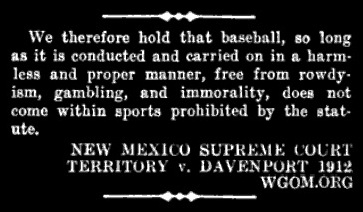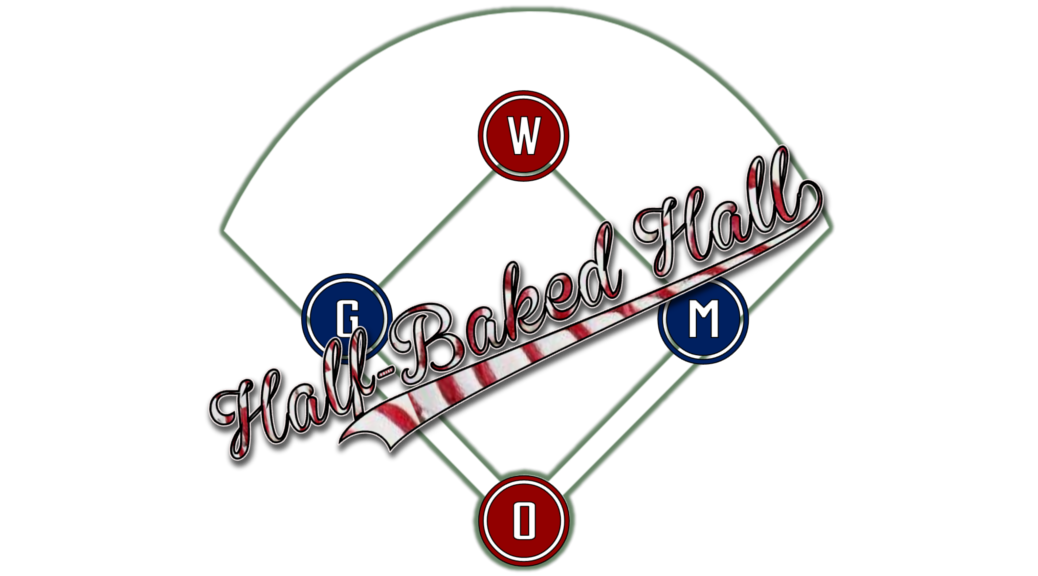So not everyone remembered to vote for Sal Bando or Bobby Bonds, but they weren't going to come close so let's just move right along...
1989
Third Base!
- Mike Schmidt (50%, 14 Votes)
- Buddy Bell (25%, 7 Votes)
- Tommy John (14%, 4 Votes)
- Darrell Evans (7%, 2 Votes)
- Jim Rice (4%, 1 Votes)
- Jim Sundberg (0%, 0 Votes)
- None Of Them! (0%, 0 Votes)
Total Voters: 14
This was also Dave Dravecky's last year, who certainly belongs in the Hall of What Could Have Beens along with Mark Fidrych


Mike Schmidt was a cornerstone for my awesome 1985 Strat-o-matic team Bat Enabled.
1985 stats or 1984?
1984 stats -- he was a great teammate to Rickey 😀
Uffda, did Buddy Bell &
DeweyDarryl Evans ever time their retirements poorly.Edit: Yes, Dewey Evans, too. But I meant Darrell, with respect to Schmidt.
Seriously. Like Tim Raines playing at the same time as Rickey Henderson.
And yet, somehow Dwight Evans' teammate is the one that eventually makes it in.
had to watch him play. he was feared!!!11!
Okay, I’ve been waiting on Buddy Bell. Sitting just below the HoF average for third base, he’s probably my threshold player for HoF third basemen. There’s just enough separation in rWAR (about an All-Star season’s worth) between Bell and recent candidates like Ken Boyer and Sal Bando for the difference to be meaningful.
The HoF standard at third base is rather high — higher, in fact, than the standards at two positions further down the defensive spectrum.
It’s not accurate to say — had Bell’s glove simply been poor enough to confine him to first base or left field — that he’d already be a Hall of Famer, as his bat might not have quite stood out in that crowd. However, Bell’s career wouldn’t be too out of step among the more glove-forward defenders to his immediate left on the diamond:
Bell was well-known for his glove during the era in which he played; he won six Gold Gloves, which we can legitimately suspect were based on his defense, rather than a hot bat or a personality cult. His career falls almost entirely within the era for complete play-by-play data via RetroSheet, so we can pretty confidently say he was above average at turning fielded balls to outs, even without the benefit of more modern defensive stats:
For what it’s worth, in Bell’s very limited time at shortstop (861 PA) he turned 94% of the 93 balls he fielded into outs, which was 3% above MLB’s average.
Obviously, this leaves out the question of range. Total Zone rates Bell’s glove as 163 runs above average for the hot corner during his career. Total Zone’s rate metric, which distributes a career contribution across 1200 innings per year, values Bell’s glove at 11 runs above average for a 135 game season. If you prefer Range Factor, here’s how Bell stands against the league over his 18,966.2 innings at third:
Finally, here’s where Bell sits on the hot corner leaderboards as of 2019 (obviously, he was probably higher on some of the all-time lists when he retired in 1989):
Bell’s bat is comfortably above average (career 109 OPS+) to avoid Mazeroski comparisons. His .341 OBP is appreciably above the .327 league average, and Bell walked (8.4%) more than he struck out (7.8%) over his career. Bell was not a slugger by any means (.138 ISO), but he was certainly valuable enough to be a solid offensive contributor (112.7 Batting Runs/11.0 Batting Wins) over his career.
I'm voting him because he always looked like he was 40 years old.
He was no Gus Bell.
I would've voted no until I read this.
Same
I wish you had done some direct comparison to Darrell Evans, whose career largely coincided with Bell's.
Evans was a Rule 5 pick of the Braves off the A's farm in 1968. That was a different era, as he had just completed his second pro season (an uninspiring 652 OPS at AA at age-21; apparently the Braves saw something).
He had brief cuppas in 1969 and 1970 before spending most of 1971 with the big club, taking over 3rd from Clete Boyer, brother of the afore-mentioned Ken Boyer. That team also featured a 31-year old Zoilo Versalles, playing out the string in his final MLB season, and a cup of coffee for a 26-year old journeyman named Tony La Russa.
Evans had 58.8 rWAR to Bell's 66.3, 119 OPS+ to Bell's 109, and 414 HRs to Bell's 201.
Evans had seasons of 9.0 (1973) and 7.2 (1974). But his third-best year was only 4.9 (in 1987!). And he earned only 0.2 dWAR for his career compared to 23.8 for Bell.
He apparently was enough of a butcher at third that the Braves shifted him to 1b in 1976 (age-29) to make room for Jerry Royster. Evans was awfuler (45 OPS) in an awful lineup and got shipped to SF in an exchange of packages that featured Willie Montanez coming back.
In SF, Evans was rejuvenated, hitting 222/329/381 the rest of the way (100 OPS+) and a respectable 255/358/422 over 8 seasons in the Bay (119 OPS+, right on his career mark).
If Evans had even been average with the glove, he'd rank well ahead of Bell. Instead, he's a solid season or two behind in career value.
Thanks for looking at this. I guess I didn't look at Evans for a couple of reasons:
1) Bell's player profile seems (to me) like one that has been — traditionally — harder to assess because of the defensive component, and thus overlooked by HoF voters. I think most people have a much more developed sense of what looks like a HoF-quality bat — Harold Baines definitely excepted — and bat-first players like Evans benefit from that. So, I was trying to provide some counterweight.
2) My feeling was that Evans was a definite Pass for me, given that Ken Boyer & Sal Bando were measurably just a bit better, and yet I'm not convinced they meet my own HoF standard.
Evans seems to be somewhat singular among his hot corner peers. Evans is the only primary third baseman (I defined this as 51% of total games) with a career rWAR below 60 to hit at least 400 homers. Evans & Aramís Ramirez are the only third basemen ≤60 rWAR to total at least 1200 Runs Created. Evans, Ramirez, & Gary Gaetti are the only third basemen with ≤60 rWAR and at least 3500 Total Bases. Evans, David Wright, Bob Elliott, & Stan Hack are the only post-deadball third basemen with ≤60 rWAR and at least 25 Batting Wins. That's a weird mix of third basemen.
With that in mind, I think Evans' true peer group might be corner infielders & corner outfielders. Here his poor glove at third is actually a relative strength considering rWAR's positional adjustment, and we can better contextualize his hitting profile to see how it fares out of position. After all, if Evans has a case, it's going to be built by his bat. I tried to identify what seemed like a good mix of Evans' contemporaries in the corners to test the theory.
Ultimately, Evans' bat looks no better than mid-pack among these guys. None of the three players with plaques in Cooperstown are no-doubt HoFers, so I think whether one votes for Evans rests on whether his ability to play passable defense at the hot corner is a unique enough skill among his offensive peers & contemporaries that it elevates him a bit, making him something of a tweener — either a good bat at a position where he's just serviceable, or a fair hitter playing a slot or few below his ceiling on the defensive spectrum.
Here's one funny thing about Evans: despite getting booted off third for his age 29–30 seasons, Evans played every one of his 131 innings at short for the Giants at ages 34–35. It went about as well as you might expect — .893 fielding percentage, 83% of balls fielded turned into outs against an MLB average of 91%.
but Darrell Evans helped out us fans so much...
1:10 mark
That was not a good call at first.
That was not a
goodcorrect call at first.FTFY
I'm seeing a trend here with calls in favor of the Twins at first.
Heh.
Good stuff. But I have questions.
According to b-r, for his career, he played 131 innings at SS, all for the Giants in 1982 and 1983. Is that what you meant? Because he played over 1,400 innings at 3b for them at ages 34-35 (1981 and 1982).
The Giants had Ken Reitz at 3b when Evans arrived in 1976 and acquired Bill Madlock to play third in 1977. So not having Evans play that position made a lot of sense. In 1978, the Giants moved Madlock to 2b and Evans back to third (the 1977 starter at 2b, Rob Andrews, couldn't hit a lick and became their futility infielder for the next couple of years). In 1979, Madlock was traded during the season to Pitt and the G-men inserted another guy who couldn't hit a lick (rookie Joe Strain) at 2b for the rest of the season. In 1980, they picked up Rennie Stennett, who proceeded to not hit a lick. In 1980, they acquired a 37-year old Joe Morgan, who could still hit a lick.
Evans' 1981 season featured 84 starts at 3b (strike-shortened year). In 1982, they brought up a 21-year old rookie named Tom O'Malley to split time at 3b with Evans (and Evans split time at 1b with a 37-year old Reggie Smith, who was still a much better hitter than Evans, and a switch hitter to boot). O'Malley was decent as a rookie (102 OPS+), which probably prompted the Giants to give him the full-time job at 3rd and leave Evans at 1b, as Smith retired at the end of the year. But O'Malley never progressed. Despite these developments, SF let Evans go after the 1983 season and he signed with the Tigers (for a big jump in salary, it appears).
Yeah, I was just trying to point that it’s weird that Evans suddenly saw any significant time at short — which he hadn’t played above AA or since he was 22 — after having been moved off third once before for poor glovework, and that’s before one considers he saw that time at short in his mid-thirties and was shifted off third for a time that began in his late twenties. There’s probably some story there, since the Giants ran him out there on several occasions over two separate seasons.
It was late when I finished that LTE, so I didn’t word it cleanly.
For my hall I'm comfortable with the Top 20 at a position. Darrell Evans has problems but a lot of players don't stick at third base that long